Grow ginger at home? Absolutely! Imagine the satisfaction of snipping off a piece of fresh, zesty ginger root right from your own backyard (or even your kitchen windowsill!) whenever you need it. No more last-minute grocery store runs or settling for dried-out, lackluster ginger. This isn’t just about convenience; it’s about connecting with nature and experiencing the joy of nurturing something from the earth.
Ginger, with its fiery flavor and incredible health benefits, has been cultivated for thousands of years. Originating in South Asia, it quickly spread across the globe, becoming a staple in cuisines and traditional medicine systems from India to China and beyond. For centuries, ginger has been revered not only for its culinary uses but also for its medicinal properties, believed to aid digestion, reduce inflammation, and even boost immunity.
But why should you learn to grow ginger at home? Well, store-bought ginger can sometimes be expensive, and its quality can vary. Plus, growing your own allows you to control the growing conditions, ensuring you have access to organic, pesticide-free ginger whenever you need it. In this article, I’m going to share some simple, effective DIY tricks and hacks that will empower you to cultivate your own thriving ginger patch, no matter your gardening experience. Get ready to unleash your inner gardener and enjoy the delicious rewards of homegrown ginger!
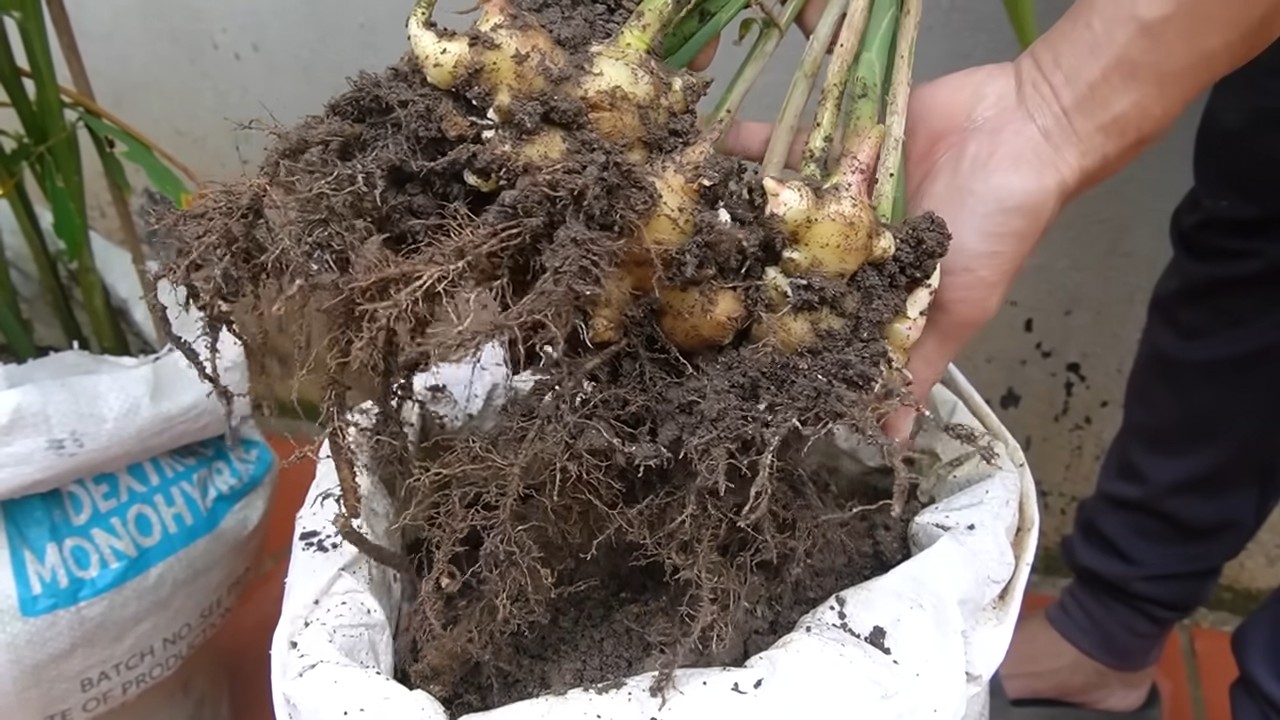
Grow Your Own Ginger: A Simple DIY Guide
Hey there, fellow plant enthusiasts! Ever thought about growing your own ginger? It’s surprisingly easy and rewarding, plus you’ll have fresh, flavorful ginger right at your fingertips whenever you need it. I’m going to walk you through the whole process, from choosing the right ginger to harvesting your very own crop. Let’s get started!
Choosing Your Ginger Rhizome
Before we dive into the planting process, let’s talk about selecting the right ginger rhizome. This is the key to a successful ginger-growing adventure.
* Look for plump, healthy rhizomes: You want ginger that looks fresh and vibrant, not shriveled or dried out.
* Multiple “eyes” are a must: These are the little buds that will sprout into new shoots. The more eyes, the better your chances of a good harvest.
* Organic is best: Opt for organic ginger if possible. Non-organic ginger may have been treated with growth inhibitors to prevent sprouting during shipping.
* Avoid smooth, perfect ginger: While it might look appealing, it could be irradiated, which will prevent it from sprouting.
* Soak it in water: If your ginger looks a little dry, soak it in water overnight to rehydrate it.
Preparing Your Ginger for Planting
Okay, you’ve got your ginger. Now it’s time to get it ready for planting.
1. Cut the rhizome (if needed): If your ginger is a large piece, you can cut it into smaller sections, making sure each section has at least one or two “eyes.” This will give you multiple plants.
2. Let the cut ends callous over: After cutting, leave the pieces in a warm, dry place for a day or two. This allows the cut ends to callous over, which helps prevent rot when you plant them.
3. Consider pre-sprouting (optional): For a head start, you can pre-sprout your ginger. Place the rhizome in a plastic bag with some slightly damp paper towels. Seal the bag and keep it in a warm place. Check it every few days and mist with water if the paper towels dry out. You should see sprouts in a week or two.
Planting Your Ginger
Now for the fun part – planting! Ginger loves warmth and humidity, so we’ll need to create the right environment.
1. Choose the right container: Ginger needs room to spread, so select a wide, shallow container. A pot that’s at least 12 inches wide and 6-8 inches deep is ideal. Make sure it has drainage holes!
2. Prepare the soil: Ginger prefers well-draining soil that’s rich in organic matter. A good mix is equal parts potting soil, compost, and perlite or vermiculite. This will provide nutrients and ensure good drainage.
3. Plant the ginger: Fill the container with the soil mixture, leaving a couple of inches of space at the top. Place the ginger rhizome on top of the soil, with the “eyes” facing upwards. Cover the rhizome with about 1-2 inches of soil.
4. Water gently: Water the soil thoroughly, but be careful not to overwater. You want the soil to be moist, not soggy.
5. Find the perfect spot: Place the container in a warm, humid location with indirect sunlight. Ginger doesn’t like direct sunlight, which can scorch the leaves. A spot near a window that gets morning sun or filtered light is perfect.
Caring for Your Ginger Plant
Once your ginger is planted, it’s important to provide the right care to ensure healthy growth.
1. Watering: Keep the soil consistently moist, but not waterlogged. Water when the top inch of soil feels dry to the touch. During the growing season (spring and summer), you may need to water more frequently.
2. Humidity: Ginger loves humidity. If you live in a dry climate, you can increase humidity by misting the plant regularly, placing a tray of water near the plant, or using a humidifier.
3. Fertilizing: Feed your ginger plant every few weeks with a balanced liquid fertilizer diluted to half strength. This will provide the nutrients it needs to thrive.
4. Temperature: Ginger thrives in warm temperatures, ideally between 70°F and 90°F (21°C and 32°C). Protect it from frost and cold drafts.
5. Pest control: Keep an eye out for pests like aphids or spider mites. If you spot any, treat them with insecticidal soap or neem oil.
6. Be patient: Ginger can take a few weeks to sprout, so don’t be discouraged if you don’t see anything happening right away. Just keep the soil moist and warm, and eventually, you’ll see those little green shoots emerge.
Harvesting Your Ginger
The best part! Harvesting your own ginger is incredibly satisfying.
1. When to harvest: You can start harvesting ginger about 8-10 months after planting. The leaves will start to turn yellow and brown, which is a sign that the rhizomes are mature.
2. Harvesting a small amount: If you just need a little ginger, you can carefully dig around the edges of the plant and cut off a piece of the rhizome. Be sure to leave the rest of the plant undisturbed so it can continue to grow.
3. Harvesting the entire plant: If you want to harvest the entire plant, gently dig up the entire clump of ginger. Shake off the excess soil and wash the rhizomes.
4. Storing your ginger: Freshly harvested ginger can be stored in the refrigerator for several weeks. You can also freeze it for longer storage. To freeze, peel the ginger and slice or grate it. Place it in a freezer bag or container and freeze.
Troubleshooting
Sometimes, things don’t go exactly as planned. Here are a few common problems you might encounter and how to fix them:
* Ginger isn’t sprouting: Make sure the soil is warm and moist, but not waterlogged. Check that the rhizome has “eyes” and that they are facing upwards. Be patient – it can take a few weeks for ginger to sprout.
* Leaves are turning yellow: This could be a sign of overwatering, underwatering, or nutrient deficiency. Check the soil moisture and adjust your watering accordingly. Fertilize the plant with a balanced liquid fertilizer.
* Leaves are scorched: This is likely due to too much direct sunlight. Move the plant to a location with indirect sunlight.
* Rotting rhizome: This is usually caused by overwatering or poor drainage. Make sure the soil is well-draining and avoid overwatering. If the rhizome is rotting, remove the affected parts and replant the healthy portions in fresh soil.
Tips for Success
Here are a few extra tips to help you grow the best ginger possible:
* Use rainwater or filtered water: Tap water can contain chlorine and other chemicals that can harm your plants.
* Rotate your crops: If you’re growing ginger in the same container year after year, it’s a good idea to rotate the soil to prevent nutrient depletion.
* Experiment with different varieties: There are many different varieties of ginger, each with its own unique flavor and characteristics. Try growing a few different varieties to see which ones you like best.
* Enjoy the process: Growing your own ginger is a rewarding experience. Don’t be afraid to experiment and have fun!
Ginger’s Health Benefits
Besides being delicious, ginger is packed with health benefits! It’s known for its anti-inflammatory properties, can help with nausea, and is a great source of antioxidants. Growing your own ginger means you have access to this amazing superfood whenever you need it.
Ginger Recipes to Try
Now that you’ve got your own homegrown ginger, it’s time to put it to use! Here are a few of my favorite recipes:
* Ginger tea: A classic remedy for colds and nausea. Simply steep a few slices of fresh ginger in hot water.
* Ginger stir-fry: Add grated ginger to your favorite stir-fry for a flavorful kick.
* Ginger cookies: A warm and spicy treat that’s perfect for the holidays.
* Ginger marinade: Use ginger to marinate meat or tofu for a delicious and flavorful meal.
I hope this guide has inspired you to grow your own ginger at home. It’s a fun and rewarding project that will provide you with fresh, flavorful ginger for years to come. Happy gardening!
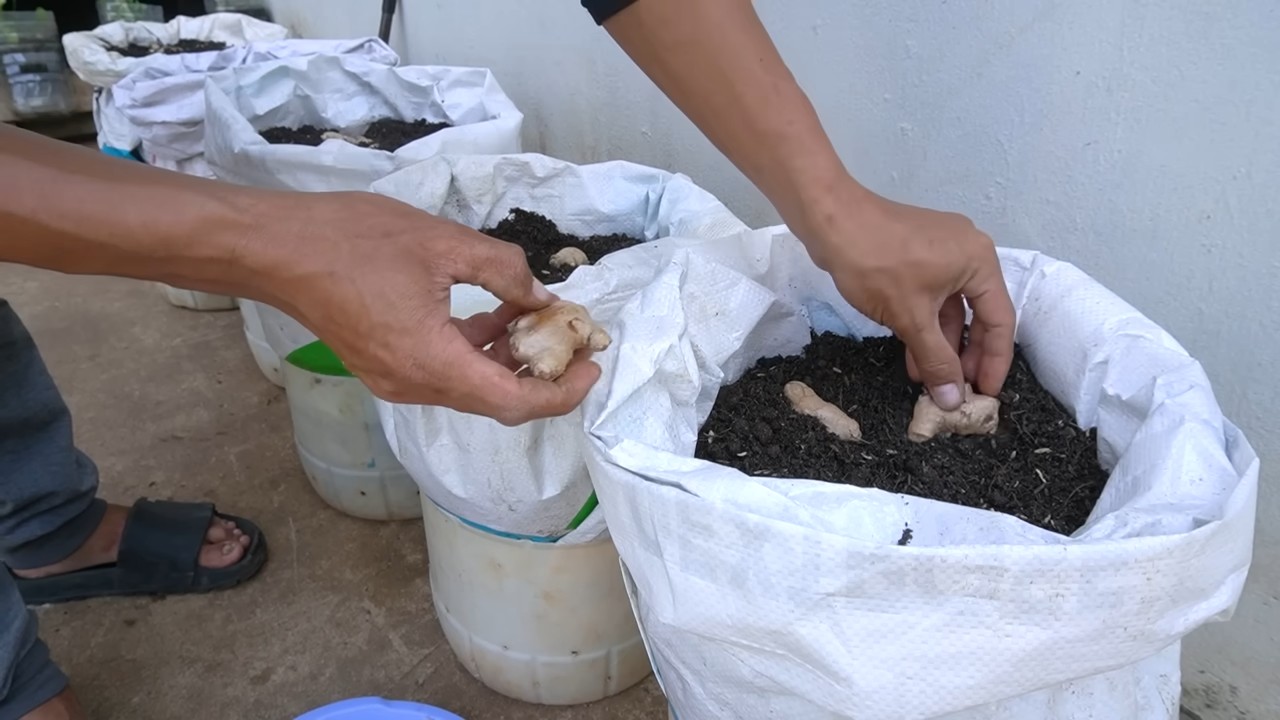
Conclusion
So, there you have it! Growing ginger at home isn’t just a fun project; it’s a gateway to fresher, more flavorful ginger than you can ever find at the grocery store. Imagine the vibrant aroma filling your kitchen as you harvest your own rhizomes, ready to be grated into stir-fries, steeped in soothing teas, or candied for a delightful treat. This DIY trick is a must-try for anyone who appreciates fresh ingredients and enjoys a touch of green in their living space.
But the benefits extend beyond just taste. Think about the satisfaction of nurturing a plant from a simple rhizome to a thriving source of culinary delight. It’s a rewarding experience that connects you to the food you eat and reduces your reliance on store-bought produce. Plus, you’ll know exactly where your ginger comes from, free from pesticides and grown with your own loving care.
Don’t be afraid to experiment! While we’ve outlined a basic method, there’s plenty of room for variation. Try different types of ginger, such as the spicier Galangal or the aromatic Turmeric (which is also a rhizome and can be grown similarly). You can also adjust the soil mix to suit your local climate and growing conditions. Some gardeners swear by adding extra compost or perlite for better drainage.
Consider growing your ginger in different containers. While a standard pot works well, you could also use a raised bed or even a large container garden. Just remember that ginger needs space to spread, so choose a container that’s wide enough to accommodate its growth.
And speaking of growth, don’t be discouraged if you don’t see results immediately. Ginger can be a bit slow to start, especially in cooler climates. Be patient, keep the soil moist but not soggy, and provide plenty of indirect sunlight. With a little care and attention, you’ll be rewarded with a bountiful harvest.
We wholeheartedly encourage you to give this DIY trick a try. It’s an easy, affordable, and incredibly rewarding way to add fresh ginger to your life. Once you’ve experienced the joy of growing your own ginger, you’ll never want to go back to store-bought again.
Ready to embark on your ginger-growing adventure? We’d love to hear about your experiences! Share your tips, tricks, and photos in the comments below. Let’s create a community of home gardeners who are passionate about fresh, flavorful ginger. Happy growing!
Frequently Asked Questions (FAQ)
1. What kind of ginger should I use to start growing?
You can use ginger from the grocery store, but it’s best to choose organic ginger. Non-organic ginger may have been treated with growth inhibitors to prevent sprouting. Look for rhizomes that are plump, firm, and have visible “eyes” or buds. These are the points from which new shoots will emerge. If you can find ginger specifically sold for planting, that’s even better!
2. How long does it take to grow ginger at home?
Ginger typically takes around 8-10 months to mature fully. You can start harvesting small pieces of ginger after about 4 months, but for a larger harvest, it’s best to wait longer. The plant will signal its readiness for harvest when the leaves start to turn yellow and die back.
3. What kind of soil is best for growing ginger?
Ginger prefers well-draining, nutrient-rich soil. A good mix would be equal parts potting soil, compost, and perlite or vermiculite. The compost provides essential nutrients, while the perlite or vermiculite improves drainage and aeration. Avoid heavy clay soils, as they can become waterlogged and lead to root rot.
4. How much sunlight does ginger need?
Ginger thrives in bright, indirect sunlight. Avoid placing it in direct sunlight, especially during the hottest part of the day, as this can scorch the leaves. A spot near an east-facing window is ideal, or you can provide shade during the afternoon if growing it outdoors.
5. How often should I water my ginger plant?
Keep the soil consistently moist, but not soggy. Water when the top inch of soil feels dry to the touch. During the growing season (spring and summer), you may need to water more frequently than during the dormant season (fall and winter). Ensure the pot has good drainage to prevent water from accumulating at the bottom.
6. Can I grow ginger indoors year-round?
Yes, you can grow ginger indoors year-round, especially in colder climates. Just make sure to provide it with adequate light, warmth, and humidity. You may need to supplement with a grow light during the winter months.
7. How do I harvest ginger?
To harvest ginger, gently dig around the plant and lift the rhizomes from the soil. You can harvest the entire plant or just take a few pieces as needed. If you only harvest a portion, be sure to leave some rhizomes in the soil to continue growing.
8. What are some common problems when growing ginger?
Some common problems include root rot (caused by overwatering), pests (such as aphids or spider mites), and fungal diseases. To prevent root rot, ensure the soil is well-draining and avoid overwatering. For pests, you can use insecticidal soap or neem oil. For fungal diseases, improve air circulation and avoid wetting the leaves when watering.
9. Can I grow ginger in a container?
Absolutely! Growing ginger in a container is a great option, especially if you live in a colder climate. Choose a container that is at least 12 inches deep and wide to allow the rhizomes to spread. Make sure the container has drainage holes to prevent waterlogging.
10. How do I store harvested ginger?
Freshly harvested ginger can be stored in the refrigerator for several weeks. Wrap it in a paper towel and place it in a plastic bag. You can also freeze ginger for longer storage. Peel and chop the ginger into smaller pieces before freezing, or grate it and freeze it in ice cube trays.
11. Is growing ginger at home really worth the effort?
Absolutely! The flavor of homegrown ginger is far superior to store-bought ginger. It’s also a rewarding experience to grow your own food and know exactly where it comes from. Plus, you’ll always have fresh ginger on hand for cooking, baking, and making tea. The process of growing ginger at home is a fantastic way to connect with nature and enjoy the fruits (or rhizomes!) of your labor.

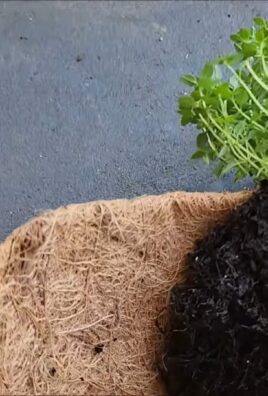
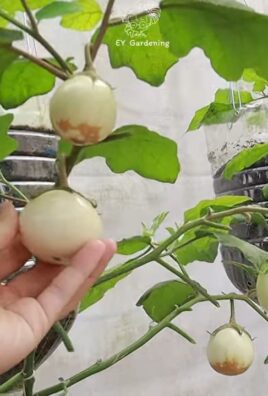
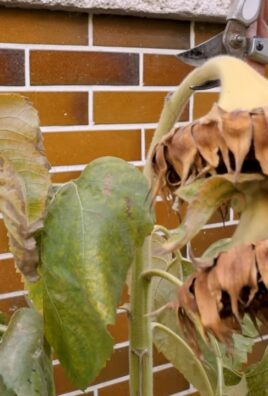
Leave a Comment